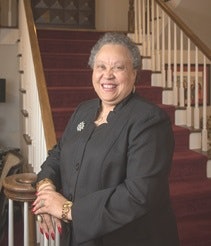Southern Association of Colleges and Schools’ Commission on Colleges (SACSCOC) president Dr. Belle S. Wheelan recently testified before the U.S. Senate Committee on Health, Education, Labor and Pensions about the merits of the age-old regional accreditation system in advocating for institutional quality and improvement.
 Dr. Belle S. Wheelan
Dr. Belle S. WheelanDuring her testimony, Wheelan detailed the accreditation process and outlined standards utilized to evaluate and conduct throughout oversight of U.S. colleges and universities.
“It’s important for federal policymakers to understand why the regional accreditation system has prevailed for so many years,” Wheelan said. “It’s not simply a matter of proximity, though that is an important factor. Each regional commission has in-depth knowledge of their states’ policies and practices, has built effective relationships with their institutions, as well as state and local elected officials and stakeholders, and understands the unique needs of area students. As Congress considers proposals to reauthorize the Higher Education Act and works with the U.S. Department of Education on related regulatory proposals, maintaining and supporting the regional accreditation system is paramount.”
She also voiced her concerns about proposals to implement “bright lines” for accountability, explaining that available federal data does not accurately represent institutional performance and outcomes.
“The point here is not just that federal graduation rates are often incomplete (an issue I know Congress is working to tackle), but also the fact that ‘bright line’ graduation rates would invariably fail to capture the many different ways in which graduation rates can be approached,” she said. “Although I oppose the concept of federal ‘bright lines’ for accountability, I strongly believe we as accreditors can and must hold institutions accountable for student outcomes. In fact, that is exactly the direction all regional accreditors, including SACSCOC, are headed.”


















